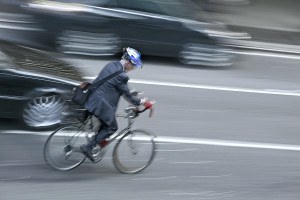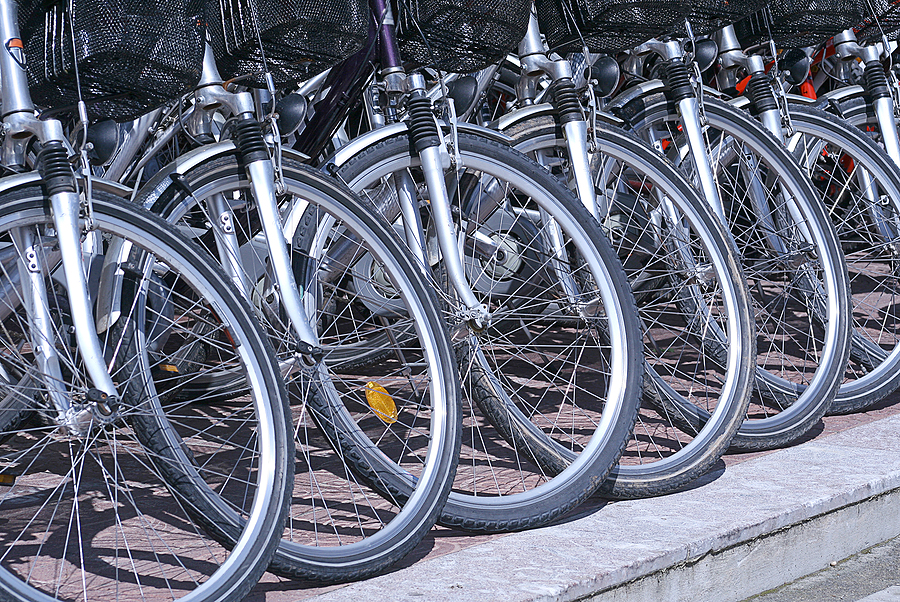There are several factors that make reconstructing bicycle accidents more difficult than reconstructing car crashes, according to Tim Nelson, a biomechanical engineer with MEA Forensics and an experienced cyclist.
During a recent panel discussion on the subject at the Combined Claims Conference held in Orange County, Calif., he outlined some common bike accident scenarios as well as evidence that can assist an investigation.
The obvious differences between a bicycle and a car, according to Nelson, are what make bicycle accident reconstruction more difficult. With only two wheels, a bicycle requires balance to maintain control. In addition, a bicycle has a higher center of gravity and a shorter wheelbase than a vehicle.
here are a few ways a bicycle can fall without a collision occurring, Nelson explained. He outlined three scenarios:
- Low side – When a bicyclist leans into a curve and the front wheel loses traction. This can occur from braking, due to a slippery spot or because of an issue relating to the rear wheel.
- High side – Similar to a rear wheel low side, but more dangerous. A loss of traction and then traction is regained, but control is lost. Can result in a pitchover.
- Pitchover – When too much front brake is applied, the rider typically tumbles over the bars. Bicyclist deceleration is limited. Other causes include, something hitting the spokes or the bike hits a fixed object. Pitching causes are typically determined by the amount of acceleration and how high the rider is.
When questioning a bicyclist about an accident, it’s important to ask if he or she was trying to regain control or avoid an impact. Nelson, also emphasized asking about cyclist experience.
“Find out how skilled that cyclist is,” said Nelson.
Nelson, an avid cyclist since he was a child, said the weight ratio of the bicyclist is an important factor too. While a driver’s mass has little influence on a car, the center of gravity on a bicycle is largely determined by the rider.
“Because of this you have a lot of weight shifts as you’re braking,” said Nelson.
He also noted that the rear brake is less effective than the front brake.
Nelson described the different types of evidence available in car versus car and car versus bicycle collisions.
Car v. Car evidence may include:
• Gouge in roadway
• Crush damage
• Rest position of vehicles
• Tire marks on roadway
• Event data recorder
Car v. Bicycle evidence may include:
• Rest positions; however, this is rare.
• Tire marks
• Injuries
• Bike crush
In addition, Nelson said bicycle-related injuries are treated differently than injuries sustained in a car crash. Car crash injuries can be used to reconstruct an accident, while injuries related to bicycle accidents can only be used to determine accident directionality.
Szu Pei Lu-Yan, an attorney with Graves & King, explained the legal strategy in these cases should include:
- Sending out a notice of preservation of evidence (bike, helmet, GoPro camera, etc.)
- Issuing written discovery, including subpoenas for medical records.
- Investigating accident and obtaining an accident report.
- Making sure evidence is retained, including bike and helmet.
She indicated it’s important to view the area of impact and determine if there were any sight line obstructions.
Was this article valuable?
Here are more articles you may enjoy.


 Vintage Ferrari Owners’ Favorite Mechanic Charged With Theft, Fraud
Vintage Ferrari Owners’ Favorite Mechanic Charged With Theft, Fraud  CoreLogic Report Probes Evolving Severe Convective Storm Risk Landscape
CoreLogic Report Probes Evolving Severe Convective Storm Risk Landscape  Texas Among Several States Facing New Fire Risks: Weather Watch
Texas Among Several States Facing New Fire Risks: Weather Watch  Oregon Schools Sued for $9M After Young Girl Allegedly Raped
Oregon Schools Sued for $9M After Young Girl Allegedly Raped 